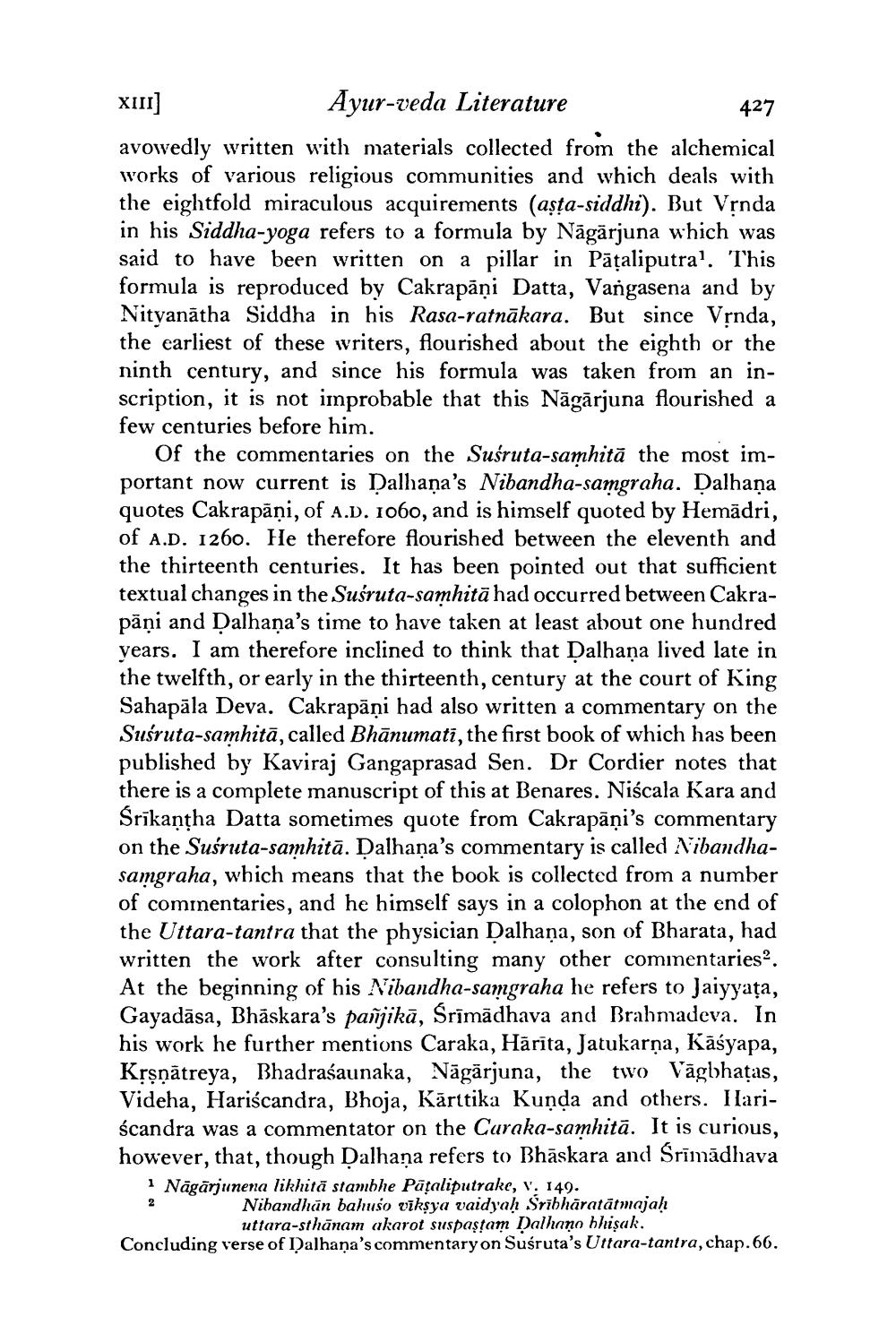________________
X11] Ayur-veda Literature
427 avowedly written with materials collected from the alchemical works of various religious communities and which deals with the eightfold miraculous acquirements (aşta-siddhi). But Vrnda in his Siddha-yoga refers to a formula by Nāgārjuna which was said to have been written on a pillar in Pāšaliputra!. This formula is reproduced by Cakrapāņi Datta, Vangasena and by Nityanātha Siddha in his Rasa-ratnākara. But since Vrnda, the earliest of these writers, flourished about the eighth or the ninth century, and since his formula was taken from an inscription, it is not improbable that this Nāgārjuna flourished a few centuries before him.
Of the commentaries on the Suśruta-samhită the most important now current is Dalhaņa's Nibandha-samgraha. Dalhana quotes Cakrapāņi, of A.D. 1060, and is himself quoted by Hemādri, of A.D. 1260. He therefore flourished between the eleventh and the thirteenth centuries. It has been pointed out that sufficient textual changes in the Suśruta-samhitā had occurred between Cakrapāņi and Dalhana's time to have taken at least about one hundred vears. I am therefore inclined to think that Dalhaņa lived late in the twelfth, or early in the thirteenth, century at the court of King Sahapāla Deva. Cakrapāni had also written a commentary on the Susruta-samhitā, called Bhānumati, the first book of which has been published by Kaviraj Gangaprasad Sen. Dr Cordier notes that there is a complete manuscript of this at Benares. Niścala Kara and Śrīkantha Datta sometimes quote from Cakrapāņi's commentary on the Suśruta-samhitā. Dalhana's commentary is called Nibandhasamgraha, which means that the book is collected from a number of commentaries, and he himself says in a colophon at the end of the Uttara-tantra that the physician Dalhaņa, son of Bharata, had written the work after consulting many other commentariesa. At the beginning of his Nibandha-samgraha he refers to Jaiyyața, Gayadāsa, Bhāskara’s pañjikā, śrīmādhava and Brahmadeva. In his work he further mentions Caraka, Hārīta, Jatukarņa, Kāsyapa, Krşņātreya, Bhadrasaunaka, Nāgārjuna, the two Vägbhatas, Videha, Hariscandra, Bhoja, Kārttika Kunda and others. IlariŚcandra was a commentator on the Curaka-samhitā. It is curious, however, that, though Dalhaņa refers to Bhāskara and Srīmādhava Nāgārjunena likhitā stambhe Pāțaliputrake, v. 149.
Nibandhan bahušo vīksya vaidyaḥ Sribhāratātmajah
uttara-sthānam akarot suspastam Dalhano bhişak. Concluding verse of Dalhaņa's commentary on Susruta's Uttara-tantra, chap. 66.




